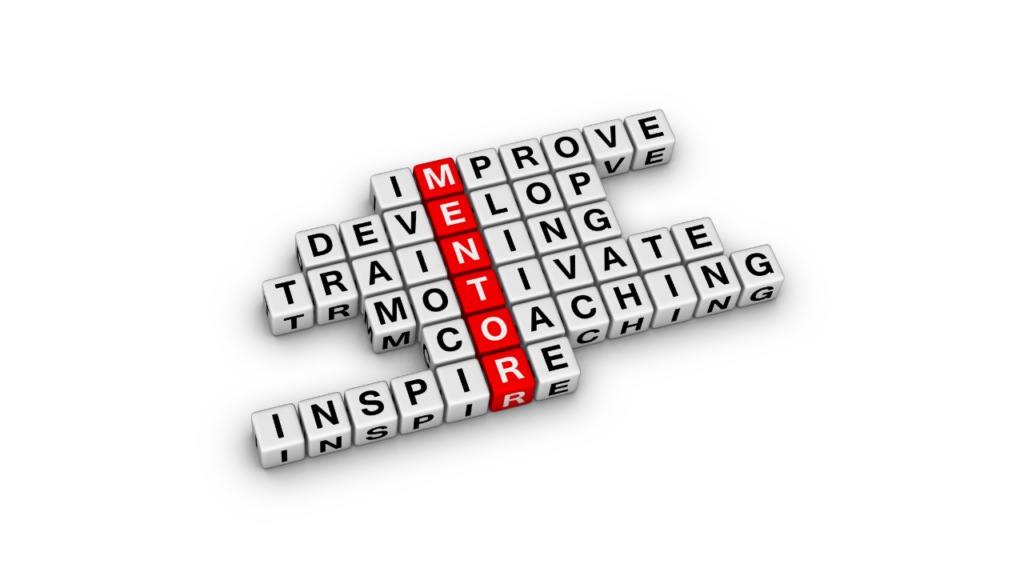Industrial Coaching
Dr Anthony Kenneson-Adams. MA. Bsc(Hons). FInstLM. Royal Air Force (Ret’d)
Posted 06/06/2023
This article will discuss the difference between industrial coaching and mentoring and how these techniques can be deployed to grow our people, so they engage with processes and thus improve business performance.
Introduction
So just in case you have not been paying attention, the world of work has been turned upside down in the past 20 years. This step-change is accelerating fast with the last of the baby boomer leadership generation retiring to be replaced with younger generations with new ideas, and new ways of working. Neither of these generations of people are wrong, they are just different and looking for different results from their life of work. My generation (the baby boomers) were looking for a job for life. Other than just trying to survive and pay the bills, these new generations are looking for a job that will enable them to grow, have increased job satisfaction and use work to enjoy life, and staying with one employer no longer ranks high on their list.
To hire and retain the best people, work culture has to evolve to meet the need for job satisfaction and growth for employees. This growth that individuals are looking for in and through work is accelerated by a focused and intentional culture of mentoring and coaching, and this is by far the preferred option of the new generations, rather than telling and directing.

It All Starts with Leadership
As is usual this cultural change begins with leadership. Leaders now need to enable their teams, to remove barriers and ensure every interaction is an opportunity. These interactions build relationships and in modern organizations relationships are key to growth both personal and organizational. These relationships can be built through industrial coaching and mentoring that nurtures the individual and benefits the business.
Mentoring
Mentoring is a hands-joined methodology, where a mentor passes on their experience as and when needed, and the mentee has someone to go to when they are unsure in a situation or where they just need someone to confirm that an approach or action is appropriate. In industry I advocate that everyone has a mentor either formally or informally and I am personally hard pressed to think of a time in my 40-year career where I did not have a mentor either in my military or civilian career. It is a sign of strength to acknowledge we do not have all the answers and those with greater experience are a valuable resource.
Mentoring is a long-term relationship focused on supporting growth where the mentor who is experienced in the field is the source of wisdom, teaching, and support, (Reh, 2019). A successful mentoring relationship needs to be a synergistic relationship between the mentor and mentee in which both parties will benefit, (Sharma and Freeman, 2014). Mentoring offers practical guidance to individuals who want to cultivate and manage ongoing developmental relationships, either as acolytes or as mentors via formal or informal relationships (Chandler, 2013).
Coaching
Coaching is a hands-off approach focused on person-centred-learning with the speed of change determined by the coachee also called the client. Rogers (1967), determined that change brought about by the individual occurred at a deeper level than that driven by an outside influence and that the behaviour change was far more likely to be sustained when realised by the client themselves. This change comes about by the client being able to explore their own specific solutions in a safe place and at their own pace.
Coaching is now proven to effect measurable change and is becoming increasingly popular in industry as a tool for improving individual and organizational performance. It involves a collaborative and goal-oriented relationship between a coach and a client, where the coach helps the client to identify and achieve their professional goals. Industrial coaching can be used to develop leadership skills, improve communication, build resilience, enhance problem-solving abilities, and manage change.
Industrial coaching can be provided in various formats, including one-on-one coaching, group coaching, or team coaching. It can also be delivered in person or virtually through various communication tools, such as video conferencing or phone calls. The coaching process usually begins with an initial assessment of the client’s needs and goals, followed by the development of a coaching plan that outlines the specific objectives, strategies, and metrics for success.
Coaching typically involves a relationship of finite duration, with a focus on behaviour modification, (Lee, 2005). If a coach can help a leader change how they think about an issue it will change how they act toward that issue, (Dyer, 2009). Coaches help professionals’ correct behaviours that detract from their performance and strengthen those behaviours that support stronger performance around a given set of activities. Coaching hones an individual’s skills be that Tiger Woods’ at the height of his game using a swing coach, or an executive coach increasing a business leaders potential.
Leadership Coaching
The overarching aim of leadership coaching is the development of authentic leadership, (Lee, 2005). By engaging with an individual at a personal trusting level, the individual becomes open to the growth of authentic leadership. The coach encourages individuals to overcome their own barriers to growth. Those barriers can be as simple as enabling them to understand that they have the right to grow or as complex as enabling them to overcome the modern western plague of poor self-esteem, (Branden, 1995), that cripples individuals at all levels and in all types of organizations. The coach enables the coachee to discover opportunities for behavioural change in their own time through person-centred-learning, (Rogers, 1967), which is key to sustaining the change. Coaching also opens the individual to such transcendent values as happiness, wholeness and feeling fulfilled. Working on transcendent values leads to outcomes where the ‘whole’ person benefits.
Importantly remember that industrial coaching involves working with individuals or teams in an industrial setting to help them achieve their professional and organizational goals. Coaching is about self-learning and improvement so it is important to ensure that coaching does not become a tool in the performance management or discipline process. On many an industrial deployment I have experienced a senior leader approaching me and starting the discussion with “I am glad you are here Sid/Fred/Jane needs to be coached on (insert subject here). This is not the role of the coach. Resist at all costs. You can certainly accept the coaching assignment, but you must make clear to the line leadership and the client that you will only coach the area the client wants to work in. To do anything else will ensure the client just says what they think you want to hear, and this does nothing for the individual or the business.
Getting Started
If you’re interested in getting started with industrial coaching, here are some simple steps you can take:
- Obtain the necessary qualifications: To become an industrial coach, you’ll benefit from having a solid understanding of the industry you want to work in, as well as having expert coaching skills. This may involve obtaining a coaching certification from a reputable organization or pursuing relevant education and training. If your business cannot support training its own coaches then find a reputable coaching organization that serves your industry and contract to them for physical or virtual coaching, to support your objectives, values, and culture. There are many who sell their services as coaches without any formal training but have valuable industrial experience, but history shows there are more mentors than coaches. Likewise, there are qualified coaches who say the industry is not relevant as the skills are transferable, this is also not optimum for your business. Both of these types of individuals may be able to help, but neither will be as successful as a qualified and experienced coach from your industry.
- Develop a clear coaching approach: Develop a coaching approach that aligns with your business values, goals and objectives. This may involve assessing your employees strengths and weaknesses and identifying opportunities for improvement. Though it will be for each individual to raise the issue they want assistance with, again it is not for leadership to direct what to coach. It is also essential to have a clear coaching framework that is adaptable to different situations. Look at models such as TGROW to get you started.
- Obtain senior Leadership buy-in: You will need to have the support of at least your own line manager as coaching will necessitate time from the work face for both you as the coach and those that you will need to coach.
- Establish a coaching practice: Develop a coaching practice that includes a business plan, a strategy, and tools to manage client relationships. Keep it professional with records that you will share with the client. This will help you design a personal coaching plan for each client.
- Continuously learn and improve: Keep up to date with the latest trends and best practices in coaching and seek opportunities to improve your skills and knowledge. Attend industry events and conferences, take courses, and seek out a coaching supervisor to ensure you maintain a profession edge. Joining or starting a coaching circle can be of great help. A coaching circle is made up of coaches with a common interest who build a sharing relationship and become better coaches by building their practice with the experience of others.
The Coaching Wheel
The coaching wheel is a good way to get started with a new client. The purpose of the wheel is to help the client identify and prioritise those items on which they would like to be coached.

- Present the client with a coaching wheel with 8 spokes.
- Mark each spoke with graduations from 1 to 10.
- Around the rim of the wheel, the client can write 8 topics that they would like to improve.
- Along the spoke marked 1 to 10 they indicate at what level they think they are now. The lower the number the more work they want to do. If they are a 4 you can ask “What would it take for you to be a 5 or a 6?”
- Join the marks to form an uneven wheel. The object is to coach each topic until all the areas are at 10.
- Let the coachee pick the topic they want to start working on as a coaching topic. It may not be the lowest mark but go with it.
Topics could be:
Leadership, teamwork, relationships, conflict management, decision making, feeling overwhelmed, imposter syndrome, problem solving, difficult conversations, building a team, stress, psychological safety etc.
The Coaching Process
- Set aside time for the coaching session at a location that is quiet and where there will be no disturbances.
- Never lead the client or offer advice. This is coaching not mentoring.
- Ask only open questions to allow the client the maximum opportunity to express themselves.
- Become an expert in ‘active listening’ and feedback what the client tells you without adding to it or giving your advice.
- Don’t rush the pauses. Let the client have time to think and form their own answers.
- Stick with the ‘not knowing’ you are not there to provide solutions just to ask open questions that enables the client to find their own answers and their own path.
- Coaching is not about judging so suspend your own beliefs.
- Ensure the client has a goal at the end of each session that you will use as the start point of the next session. Remember coaching is not a chat, it’s a journey of continuous improvement that you should track.
Measuring the Results
Mentoring and coaching must show business not just personal results. If an organization is bringing in coaches or employing coaches, what is the return on investment? Isolating one change such as coaching in a multi-change complex environment and stating that it is the reason for success is both ungrounded and dangerous without specific cause and effect, but coaching and mentoring will contribute to measurable results when specific KPIs are isolated as a focus for coaching success. Those KPIs could be focused on reduced down-time, better employee retention, improved quality or reliability or improved OEE as a result of coaching efforts on subjects such as better communication, increased teamwork, building high performance teams etc. However, the coach needs to show that, as a result of coaching, actions, feelings and thinking have changed overtime. One cannot empirically measure the increased value of an employee who has overcome a barrier, but one can measure the improved result of their actions on the business. Therefore it is important to base line a KPI that should be impacted by the results of coaching and track the changes in that KPI as a result of say improved leadership, or communication, or team working, or confidence or whatever.
The benefits of industrial coaching have been well-documented and include the following:
- Improved Performance: Industrial coaching can help individuals and teams improve their performance by identifying their strengths and weaknesses and developing strategies to maximize their potential. Coaching can help individuals set clear goals and objectives and develop action plans to achieve them, which can lead to improved productivity, efficiency, and quality.
- Increased Engagement: Industrial coaching can increase engagement and motivation among employees by helping them feel valued and supported in their work. When employees feel that their employer cares about their personal and professional development, they are more likely to be committed to the organization and its goals.
- Enhanced Leadership Skills: Coaching can help individuals develop leadership skills, such as communication, delegation, and conflict resolution, which are critical for success in industrial settings. By developing these skills, individuals can become better managers, supervisors, and leaders, which can benefit the organization as a whole.
- Improved Employee Retention: Coaching can help organizations retain talented employees by providing them with opportunities for growth and development. When employees feel that their employer is invested in their success, they are more likely to stay with the organization and contribute to its long-term success.
- Increased Innovation: Coaching can help individuals and teams think more creatively and develop new ideas and solutions to business challenges. By encouraging employees to think outside the box and take calculated risks, coaching can help organizations stay competitive and adapt to changing market conditions.
Summary
Both mentoring and coaching offer valuable developmental support to business leaders. Importantly, leaders must understand the difference between mentoring and coaching, and further understand that these techniques are complementary though not interchangeable. The strength of using mentoring, and coaching is in the transfer of knowledge from the practitioner to develop others or to enable person-centred-learning that promotes business growth and develops followership and business continuity.
In my experience every business can benefit from coaching and mentoring and with the needs of employees changing every business must adapt to nurture employees who will commit and grow with the business. Coaching and mentoring are certainly a part of the solution to build the businesses of the future.
References:
Candler, D. (2013). Mentoring. Oxford Bibliographies. [Online] https://www-oxfordbibliographies-com.ezproxy.mdx.ac.uk/view/document/obo-9780199846740/obo-9780199846740-0049.xml [Accessed 12 Oct 2020].
Dyer, W. (2009). Change Your Thoughts – Change your life: Hay House .
Lee, G. (2005). Leadership Coaching. 1st ed. London: CIPD.
Reh, J. (2019). A guide to understanding the role of the mentor. [Online]
Available at: https://www.thebalancecareers.com/a-guide-to-understanding-the-role-of-a-mentor-2275318
Rogers, C. (1967). On Becoming a Person. London: Constable.
Sharma, G. V., Freeman, A. M. (2014). Mentoring: Why it Matters Even After Training. Journal of the American College of Cardiology. Volume 64, Issue 18, pp. 1964 -1965

Dr Anthony Kenneson-Adams
Dr. Anthony Kenneson-Adams had a 30-year career in the Royal Air Force, becoming a Senior Engineering Officer, Project Manager and Engineering Authority responsible for multiple fast jets and large-body aircraft in peace and war operations. On retiring from the Royal Air Force, he became a Corporate Operational Excellence Consultant in the Paper Manufacturing and Packaging Industries and is now the Head of Learning and Knowledge Transfer for the international Project 7 Consultancy. You can contact Anthony at www.project7consultancy.com or [email protected]
Related Articles

How to Fix the 70/30 Phenomenon

Zen and the Art of Managing Maintenance

Why do maintenance improvement initiatives fail to deliver? (Hedgehog or Fox?)

Why Maintenance Improvement Efforts Fail

TPM and RCM: Whirled Class

Where Do Maintenance Professionals Come From?




